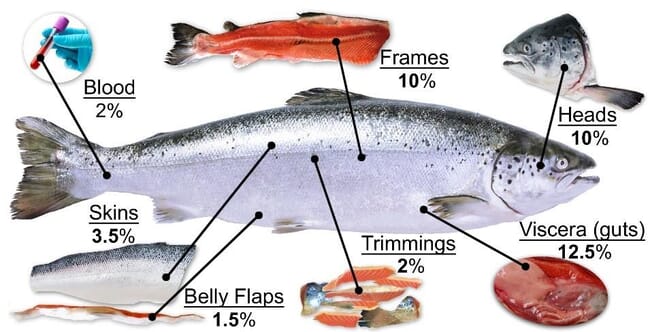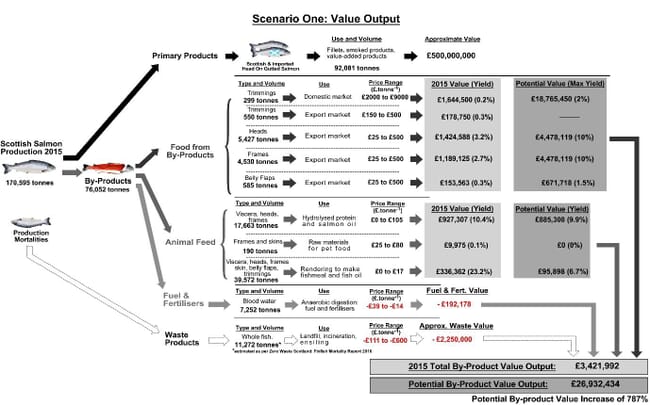So claims new research, which has found that the total by-product value output could be improved by 803 percent (£23.7 million), based on 2015 figures, adding 5.5 percent to the value of the country's salmon industry.
Led by Julien Stevens, researchers from the University of Stirling’s Institute of Aquaculture and University of Massachusetts have recently published research funded by IFFO, the marine ingredients organisation. The research investigated how value could be added to aquaculture through better utilisation of by-products, by maximising edible yields and better separation at the processing stage, looking at the Scottish salmon farming industry as a case study.

The terrestrial livestock processing industry has long been able to separate by-products to maximise value and efficient utilisation, and this research sought to identify the best markets for salmon processing by-products in the same way. For finfish, by-products typically include trimmings, skins, heads, frames (bones with attached flesh), viscera (guts) and blood. Far from being waste, marine by-products are a potentially important resource, being known to contain valuable nutrients such as minerals, vitamins, protein and lipid fractions (especially important long chain omega-3 fatty acids) which can support further processing into a range of products and markets.
By exploiting all high value by-product types (heads, frames, trimmings and belly flaps) for existing domestic and export food markets, the authors demonstrated the potential for a total increase of 803% (£23.7 million) in the total by-product value output for 2015, adding 5.5 percent value to the salmon industry. By directing 77 percent of the annual whole fish production towards human consumption, combining primary products (54% yield) with the maximum potential by-product food yield (~ 23%). This results in 132,171 tonnes of food. The remaining by-products, minus blood water (4.3%), are then utilised in the important production of fishmeal and fish oil, and subsequently used in aquafeed for farm raised marine species. In this example, accounting for that material in feed for European seabass and gilthead seabream, would result in 148,691 tonnes of total edible yield compared to the original production of 92,081 tonnes of salmon.

The authors also commented on how current Fish in: Fish out (FI:FO) models do not adequately take into account how finfish are utilised and therefore the efficiency of marine ingredients utilisation in aquafeeds.
IFFO’s Dr Neil Auchterlonie noted that: "Current research highlights that FI:FO calculations tend to be simplistic, nether taking into account the nutritional contributions from fishmeal and fish oil beyond protein and energy, nor do they account for the end product other than the edible portion. FIFO ratios have therefore tended to underestimate the contributions from fishmeal and fish oil.”
In conclusion, lead author Julien Stevens noted: “We hope this research facilitates improvements, there is a need for further infrastructure investment and policy support to incentivise resource efficiency, along with greater transparency on the current uses of by-products within the sector.”


